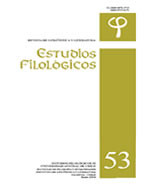On startings and endings in the political discourse
Main Article Content
Abstract
The analysis of long pieces of discourse (for example, those lasting ten or more minutes) requires the establishment of new discourse units in order to be able to segment such pieces beyond the traditional processing units, utterances and their subunits -acts and subacts. This article aims at outlining superior categories of division and their application to the "State of the Nation Debate", a political debate which takes place in Spain every year. Two different types of major units are distinguished (textual-theme units): on one hand, the sequences and its subunits -beginning, middle and end; and, on the other hand, the subsequences and its subunits -topic, sub-theme, sub-sub-theme, etc. In the latter, the already mentioned processing units (textual-illocutive units) will be integrated. Such segmentation will provide the study of the discursive devices by which we achieve effects -courtesy, irony, argument, racism, etc.- with a higher level of uniformity.

